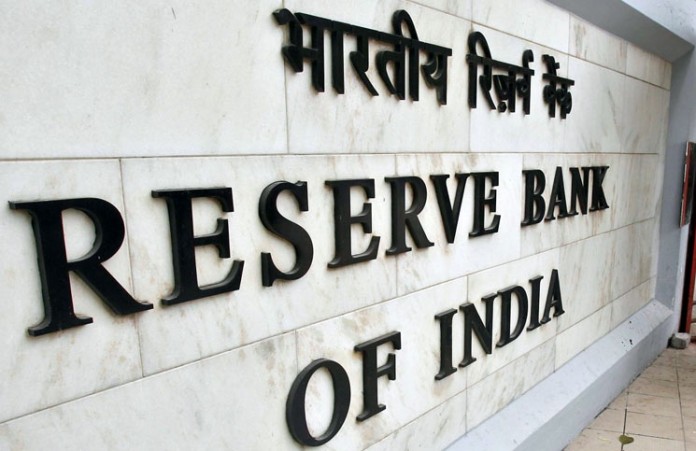In this blog post, Devpriya Das, a practising Advocate in Kolkata and a student pursuing a Diploma in Entrepreneurship Administration and Business Laws from NUJS, Kolkata, details the different RBI Guidelines that help in the business structuring of a Bank.
It is important to mention at the first instance the meaning of ‘banking’ under the laws of India and what are the pieces of legislation that govern each grain of a banking company.
The Banking Regulation Act, 1949
Section 5(b) defines ‘banking’ as “ accepting, for the purpose of lending or investment, of deposits of money from the public, repayable on demand or otherwise, and withdrawal by cheque, draft, order or otherwise;”
Therefore the essential function of a Bank should be accepting deposits, lending, investment of public money and repaying the same on demand through negotiable instruments. Thus this definition and its requirements form the basis of banking operation in India.
Furthermore this Act of 1949 provides for licensing of Banking activities by a Regulator being the Reserve Bank of India, which provides and recognises entities ‘fit and proper’ for banking activities in India.
Section 22 of the Banking Regulation Act, 1949 provides for licensing of banking companies, and the relevant extract of the said provision is as follows:-
“Save as hereinafter PROVIDED, no company shall carry on banking business in India unless it holds a licence issued in that behalf by the Reserve Bank and any such licence may be issued subject to such conditions as the Reserve Bank may think fit to impose……”
Therefore from the above provisions, it is evident that the nature of business a bank can indulge in a more formal way can be placed as ‘what are permissible businesses for a banking company’ and which statutory body regulates such activities from the inception of the same by licensing such banking companies.
A BANKING COMPANY cannot run a banking activity in contravention to the guidelines issued by the RESERVE BANK OF INDIA, and its business should be in consonance with the guidelines issued by the RESERVE BANK OF INDIA.
Business structuring of a Bank should include a composite mechanism which should start from the formation of a Banking Company going through the business activities approved by the Reserve Bank of India through the acceptance of loan applications from the public at large and disbursement of the same at the permissible rate of interest and realizing the same through legal means if defaulted.
Guidelines Issued By The Reserve Bank Of India For Banking Companies
- Guidelines for Licensing of New Banks in the Private Sector.
The above guidelines are in relation to licensing of new Banks in Public Sector. A licensing by a statutory body in respect of a Bank is one of the most important aspect of a business structure because it is that statutory body, (in this case, Reserve Bank of India) will prima facie analyze the credentials of the Promoters involved in the proposed Banking activities and the strength and weaknesses of the proposed project of floating a Banking Company. The above guidelines are directed towards the following objective and criteria:
- Eligible Promoters – Entities / groups in the private sector that are ‘owned and controlled by residents.’

- ‘Fit and Proper’ criteria – Promoters / Promoter Groups should have a past record of sound credentials and integrity.
- Corporate structure of the NOFHC (Non-Operative Financial Holding Company) – Promoter / Promoter Groups will be permitted to set up a bank only through a wholly-owned Non-Operative Financial Holding Company.
- Regulatory framework – the bank will be governed by the provisions of the Banking Regulation Act, 1949, Reserve Bank of India Act, 1934, Foreign Exchange Management Act, 1999, Payment and Settlement Systems Act, 2007, other relevant Statutes and the Directives, Prudential regulations and other Guidelines/Instructions issued by RBI and other regulators from time to time, including the regulations of SEBI regarding public issues and other guidelines applicable to listed banking companies.
- Foreign shareholding in the bank – Notwithstanding the current FDI policy, where foreign shareholding in private sector banks is allowed up to a ceiling of 74 per cent of the paid-up voting equity capital, the aggregate non-resident shareholding from FDI, NRIs and FIIs in the new private sector banks shall not exceed 49 per cent of the paid-up voting equity capital for the first 5 years from the date of licensing of the bank.
- Corporate Governance – Transparency in the activities and disclosure of the name of the Promoters.
- Guidelines for Licensing of Small Finance Banks in the Private Sector.
The above guideline was released on the website of the Reserve Bank of India on November 27, 2014, after the announcement by the Hon’ble Finance Minister and after the public discussion.
The above guideline has the following objectives and applicability:-
- Provision of savings vehicles.
- Supply of credit to small business units; small and marginal farmers; micro and small industries; and other unorganised sector entities, through high technology low-cost operations.

- The small finance bank shall primarily undertake basic banking activities of acceptance of deposits and lending to un-served and underserved sections including small business units, small and marginal farmers, micro and small industries and unorganised sector entities.
- There will not be any restriction in the area of operations of small finance banks.
The above guideline is only applicable to the Banks which opt for being a Small Finance Bank in a Public Sector.
- Master Circular – Prudential norms on Income Recognition, Asset Classification and Provisioning pertaining to Advances.- RBI/2015-16/101 DBR.No.BP.BC.2/21.04.048/2015-16 dated July 1, 2015.
The above guideline is in relation to the realisation of advances which were lent to the borrowers and the borrowers subsequently failed to pay the advances lent to them. A Banking business and its structure will fall to pieces if there is no effective machinery for the realization of the money advanced to the people at large. This guideline is made in consonance of a very controversial piece of legislation known as “The Securitization and Reconstruction of Financial Assets and Enforcement of Security Interest Act, 2002” which empowers the Banks and Financial Institutions identified as the secured creditor because of the underlying security attached to the loans advanced through mortgage to realize their dues without intervention of any Court or Tribunal. The applicability of the guideline and the Act for which the guideline was made is as follows:-
- Non-Performing Asset (NPA) – An asset, including a leased asset, becomes nonperforming when it ceases to generate income for the bank. Before invoking the
 provision of the Securitization and Reconstruction of Financial Assets and Enforcement of Security Interest Act, 2002, and the guideline herein it is a condition precedent that the account of the Borrower should be classified as the Non-Performing Asset Account.
provision of the Securitization and Reconstruction of Financial Assets and Enforcement of Security Interest Act, 2002, and the guideline herein it is a condition precedent that the account of the Borrower should be classified as the Non-Performing Asset Account. - Categories of NPAs – (a) Sub-Standard Assets (b) Doubtful Assets (c) Loss Assets.
- Sale of NPAs to Reconstruction Companies/Securitization Companies – The guideline and the Act also recognises the sale of Non-Performing Assets Accounts to Reconstruction Companies/Securitization Companies for the realization of dues from the Borrowers by liquidating the secured assets of the Borrower or the Guarantor under the provisions of the Act of 2002.
- Master Circular – Cash Reserve Ratio (CRR) and Statutory Liquidity Ratio (SLR) – RBI/2015-16/98 DBR.No.Ret.BC.24/12.01.001/2015-16 dated July 1, 2015.
In terms of Section 42(1) of the RBI Act, 1934 the Reserve Bank, having regard to the needs of securing the monetary stability in the country, prescribes the CRR for SCBs without any floor or ceiling rate. Cash Reserve Ratio Account (CRR) is maintained by all Commercial Banks and is a mandatory requirement to run a banking business to ensure that the Bank is solvent enough to pay its depositors. It will give protection to the public at large investing and depositing money with a Bank and will have an assurance that their money is secured under the Regulatory machinery created by the Reserve Bank of India. The salient features of the above guidelines are as follows:-
- Maintenance of CRR – 4.00 percent of a bank’s total of Demand and Time Liability.
- Demand Liabilities – Demand Liabilities of a bank are liabilities which are payable on demand.
- Time Liabilities – Time Liabilities of a bank are those which are payable otherwise than on demand.
The above are the basic Business Structure which every Banking Company requires under the Guidelines of the Reserve Bank of India which consist of:-
- Norms under which the Money will be advanced.
- License to start the Banking Activities.
- Recovery of Money Advanced to the Borrower in the case of default.
 Serato DJ Crack 2025Serato DJ PRO Crack
Serato DJ Crack 2025Serato DJ PRO Crack











 Allow notifications
Allow notifications



